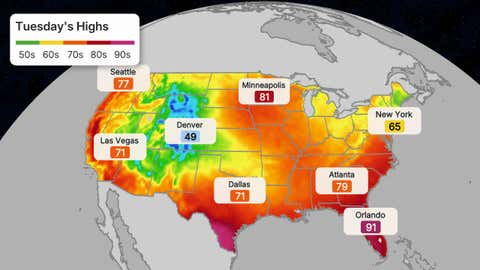Understanding Omega Block Weather: Impacts, Patterns, and What to Expect
When unusual weather lingers over large parts of the country, it is often linked to a phenomenon called omega block weather. This stubborn atmospheric pattern can affect everything from rainfall and temperature to flooding risk. But what exactly is an omega block, and how does it influence weather across the United States? Let’s take a closer look at this weather setup, its impacts, and how you can prepare.

What Is an Omega Block Weather Pattern?
An omega block is a large-scale atmospheric pattern where the jet stream bends in the shape of the Greek letter omega (Ω). This causes weather systems to slow down or stall for days at a time. When an omega block weather pattern happens, meteorologists say the normal west-to-east flow in the atmosphere gets “blocked.” This forces high and low-pressure systems to remain in place longer than usual.
In the center of the block, dry, warm, and calm conditions often dominate. On either side, persistent low-pressure systems can bring days of unsettled, wet, or even stormy weather. This blocking action can last from several days to even a week, producing dramatic effects locally and regionally.
Impacts of Omega Block Weather
The impacts of omega block weather patterns can be far-reaching. In recent years, these patterns have been linked to heavy rainfall and flooding on both sides of the block, especially when slow-moving storm systems become trapped. For example, severe flooding can affect the Plains, while needed rain reaches the Northeast, as explained by The Weather Channel. In both areas, local conditions can change rapidly as rain bands develop and persist.
Temperature swings also occur during omega block events. While the northern half of the block usually stays drier and warmer than average, other regions can see cooler conditions, even unseasonal snow. The pattern can "flip" temperatures, resulting in highs in the Midwest that match or even exceed those in the South. At the same time, areas like the Rockies might experience late-season snowfall. Yahoo News highlights how these atmospheric shifts can bring "upside-down" temperature patterns and extend the risk of flooding due to slow-moving weather systems.
Why Does Omega Block Weather Matter?
Because omega block weather patterns tend to last longer than typical setups, their effects are more pronounced. Persistent rain can lead to dangerous flooding, especially in already saturated areas. Dry zones inside the block might see a period of drought stress. Temperature extremes affect agriculture, infrastructure, and daily life for millions of people.
Understanding these patterns allows meteorologists and emergency planners to better anticipate weather hazards. If you live in an area impacted by omega block weather, it's important to monitor forecasts and be prepared for both heavy rain and temperature swings.
Stay Informed and Prepared
Omega block weather isn’t just a scientific curiosity—it’s a real-world weather pattern with significant impacts. Whether it’s prolonged rainfall leading to flash floods, or warm, stable weather that seems endless, knowing how these patterns develop can help you stay safe and ready.
For more in-depth coverage and real-time updates on current omega block weather events, check out the detailed reporting from The Weather Channel and recent insights from Yahoo News. Stay alert to local warnings and forecasts, and share this article to help others understand the dynamics of omega block weather in your area.